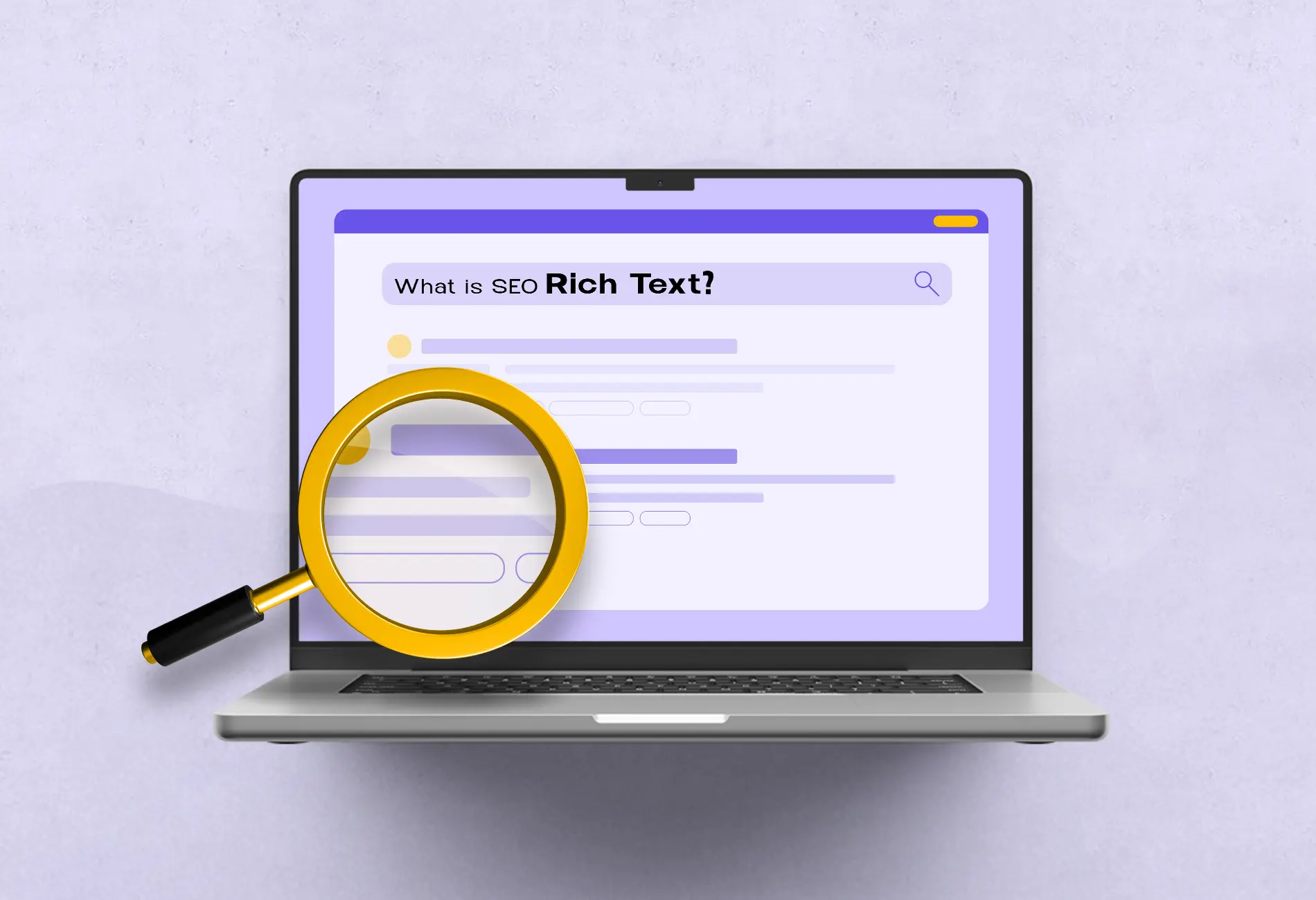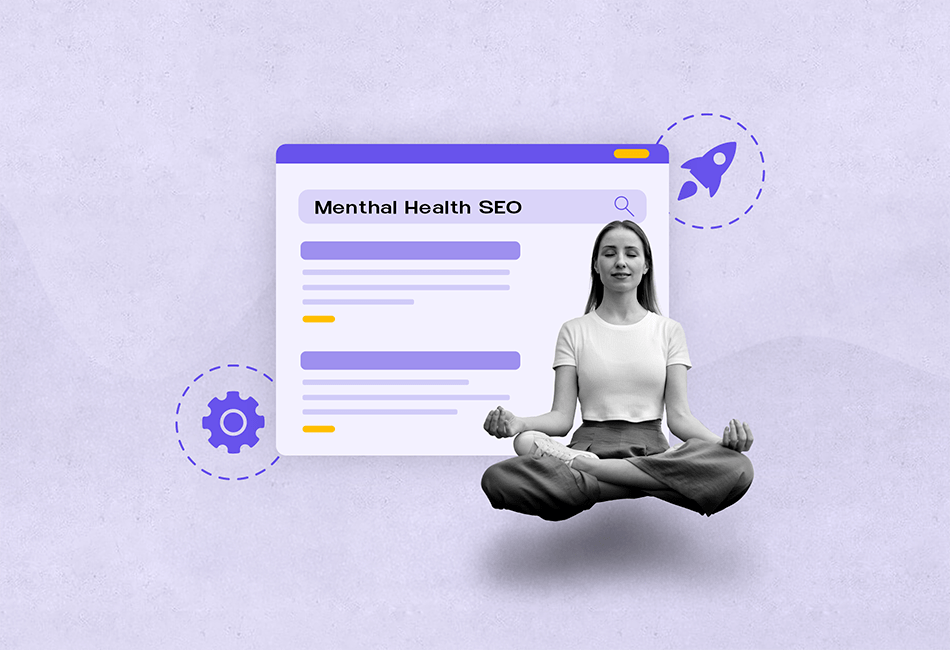If you’ve been pouring time, money, and energy into SEO but still feel like your content just isn’t breaking through—this might be the missing piece: rich text.
We all learn about SEO terminology: keywords, backlinks, meta tags. This is the reality, though—today’s search engines are becoming increasingly intelligent. They don’t simply scroll through your text for keywords anymore. They examine the manner in which your content is written, structured, and how useful it is to the reader.
And this is where rich text comes in. It’s the beginning of well-performing SEO content that gets ranked, converts, and receives engagement.
In this article, we will break down exactly what rich text is, why it matters, how it is a game changer for SEO, and how you can use it today—specifically if you’re in an industry like addiction recovery or mental health.
What is Rich Text in SEO?
Rich text refers to content that embeds more than plain, unstructured text. Instead of being large blocks of text, rich text has structural elements like headings, bold text, lists, internal links, and other structural components that are easily understandable both for users and search engines.
It’s not pretty—it’s about creating content that is easier to read, scan, and be indexed.
Plain text is what you have when you type a paragraph into Notepad. It is not formatted, there is no emphasis, and there is no hierarchy. Rich text, on the other hand, is formatted in a way that makes it meaningful and hierarchical. It is the difference between a wall of words and a well-formatted, readable, SEO-friendly article.
Search engines use advanced algorithms to determine how relevant and helpful your content is. Rich text gives them the structure they need to make that judgment more accurately—and more favorably.
Why Rich Text is Crucial for SEO Success
People don’t browse websites like they read books. They scan. They scan for headings, bullet points, bolded statements, and short paragraphs that enable them to devour the message at a glance.
Rich text allows you to organize your content so it’s directly talking to those behaviors. Appropriate headings, white space, and emphasis facilitate the reader finding what they need—and staying on the page longer. This increase in “dwell time” is a good thing for search engines to observe, and that means it’s a good thing for you as well. It Boosts Semantic SEO
Google is more concerned with learning your content than in scanning it for keywords. Semantic SEO enters the picture. Rich text provides search engines with the context and meaning framework to learn your content. This enables them to connect your content with search intent more naturally, especially on longer-tail search and conversational search.
Ever wonder how certain sites get pulled into those “Position Zero” boxes at the top of Google search results?
In most cases, they’re using structured, rich text formats—like lists, FAQs, or definitions—that are easy for Google to scrape and display. Displaying your content with clean headers and structured organization places you far more likely to win that coveted real estate.
What Makes Text 'Rich'?
These break your content down into bite-sized pieces. They create a visual and logical structure that allows both users and search engines to follow your train of thought.
The H1 is your title of record—used once on each page. H2s and H3s break up your sections and make reading easier. The higher your headlines, the more readable and user-friendly your content is.
These are subtle yet effective tools. Bolded statements draw emphasis to key takeaways. Italicized text can emphasize tone or point the reader’s interpretation in a specific direction. Applied strategically, they make key points stand out without disrupting the content flow.
Internal links are the links within various pages of your site that guide users to associated information and help search engines grasp the structure of your website. External links to authoritative sites bring credibility and depth to your information.
Whether it’s a how-to or an ideas breakdown, lists make information more palatable. They’re perfect for breaking down tough topics or presenting options in a format that jumps off the page.
Pictures do help to clarify points, but it is the alt text that makes them valuable from an SEO perspective. Alt text is a short description of the picture that helps search engines understand what it is. It is also important for accessibility.
Schema markup is a form of code you put on your website to help search engines understand the type of content you’re publishing. Whether it’s a product, a service, an article, or an FAQ, schema can make your website stand out by enhancing your search result appearance with rich snippets.
Real-World Example: Rich Text in Action
Let’s say you’re writing a blog post for a behavioral health provider on the topic: “Signs of Depression in Young Adults.”
Here’s a sample of what plain text might look like:
“Depression in young adults can present in various ways. They may experience mood changes, fatigue, lack of interest in activities, and social withdrawal. It’s important to get help.”
Now, let’s look at the same content using rich text:
Symptoms of Depression in Young Adults
Recognizing the early symptoms of depression will help young adults get the help they need. Some of these symptoms include:
- Persistent sadness or hopelessness
- Fatigue or loss of energy
- Loss of interest in things that were previously enjoyed
- Inability to concentrate or make decisions
- Social withdrawal or isolation from family and friends
The National Institute of Mental Health reports that early treatment dramatically improves the prognosis for young people with depression.
Rich text version is more readable, scan-friendly, and value-rich. It also signals to Google that the content is well-structured, authoritative, and useful.
How to Create Rich Text That Doesn't Sound Robot-Like
There is a myth shared widely that the content written specifically for SEO tends to sound stilted or robot-like. However, in reality, superb SEO content ought not to be robotic in its tone—and rich text can indeed assist here.
Here’s the way to have the perfect balance:
- Write with the user in mind first! What questions are they asking? What problems are they trying to solve?
- Use keywords thoughtfully, but don’t overdo it! Search engines are smart enough to recognize synonyms and context.
- Break up long paragraphs! Big walls of text are intimidating. Keep your paragraphs short and readable.
- Use natural language! If it doesn’t sound like something you’d say out loud, consider rewriting it.
- Use formatting to clarify, not fill! Every heading or bolded sentence must serve a purpose.
Remember, the point of rich text is to make your content readable—not to turn it into a technical report.
Why Rich Text is Especially Crucial in Niche Industries
Content does more than attract clicks in niche industries like addiction treatment, behavioral health, or mental health services—it builds trust.
Patients and families who are asking for help tend to be in crisis or distress. They’re looking for immediate, empathic, and authoritative information. Rich text allows you to present that information in an easy-to-follow and easy-to-scan way.
It also sets your site apart from other sites that are not putting as much effort into organizing their content.
At Huely, we’ve helped countless treatment centers improve their organic traffic and conversions just by implementing rich text best practices across their blogs, landing pages, and service pages. It’s not just about getting to the top of Google—it’s about keeping people there once they find you.
Common Mistakes to Avoid with Rich Text
As valuable as rich text is, it’s easy to misuse or misunderstand. Here are some of the most common mistakes we encounter—and how to avoid them.
- Keyword Stuffing:
It’s tempting to put your target keyword ten times per paragraph, but doing so will actually hurt your rankings. Use your keywords organically and prioritize clarity. - Overusing Formatting:
Bold and italics must be used sparingly. If everything is italicized and bolded, nothing will jump out. Think carefully about what you require the reader to remember. - Leaving Out Mobile Experience:
Your post looks great on a desktop, but most users are looking at it on mobile. Make sure your formatting carries across devices—responsive themes and frequent testing. - Leaving Out to Internal Linking:
Internal linking maintains readers engaged and facilitates crawlability to search engines. Any blog post or page should have descriptive internal links leading them to the corresponding significant content in your site.
Rich Text and the Future of SEO
SEO is advancing at turbo speed.
No longer is it about whoever gets most keywords stuffed into one blog post. Today, it is about providing most value in as readable, easy format.
Rich text is the foundation for doing exactly that. It brings together content structure, user experience, and SEO best practices in a way that benefits everyone—from your readers to your search rankings.
If you’re not already using rich text formatting on your website, you’re leaving a huge opportunity on the table.
Ready to Turn Your Content Into a Ranking Machine?
Whether you’re running a rehab center, mental health clinic, or other high-trust business, your content simply has to be there. It has to rank, resonate, and convert.
At Huely, we craft authoritative text SEO strategies that do exactly that. We know how to balance authority with empathy, and structure with soul—specifically, for businesses in the behavioral health space.
Ready to:
- Attract more traffic
- Increase engagement
- Establish authority within your niche
If you’re ready to create content that actually connects and climbs the rankings, let’s have a conversation. At Huely, we’ll help you turn your ideas into content that works—without the fluff.





